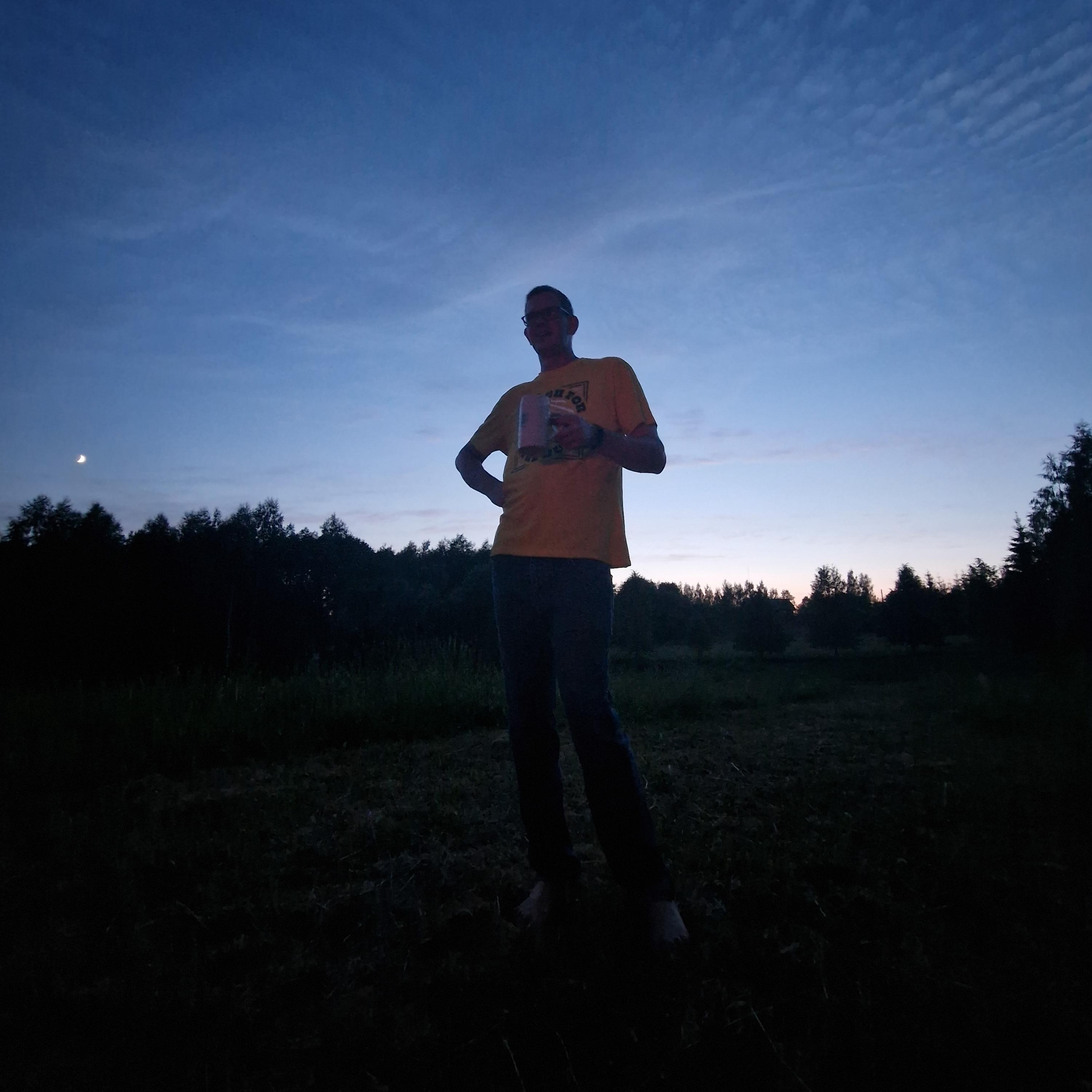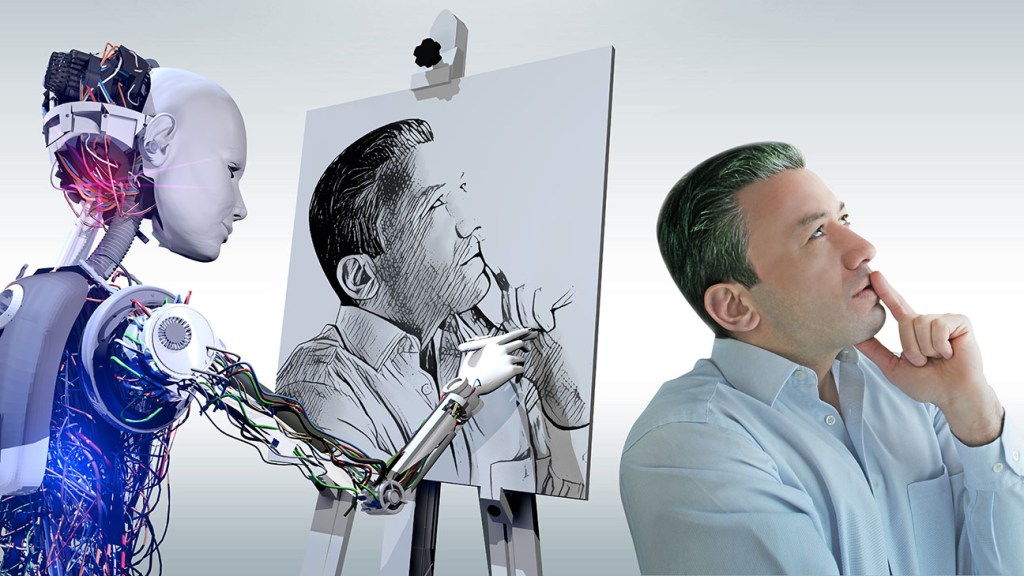More than 100 days into the writers strike, fears have kept mounting over the possibility of studios deploying generative artificial intelligence to completely pen scripts. But intellectual property law has long said that copyrights are only granted to works created by humans, and that doesn’t look like it’s changing anytime soon.
A federal judge on Friday upheld a finding from the U.S. Copyright Office that a piece of art created by AI is not open to protection. The ruling was delivered in an order turning down Stephen Thaler’s bid challenging the government’s position refusing to register works made by AI. Copyright law has “never stretched so far” to “protect works generated by new forms of technology operating absent any guiding human hand,” U.S. District Judge Beryl Howell found.
The opinion stressed, “Human authorship is a bedrock requirement.”
The push for protection of works created by AI has been spearheaded by Thaler, chief executive of neural network firm Imagination Engines. In 2018, he listed an AI system, the Creativity Machine, as the sole creator of an artwork called A Recent Entrance to Paradise, which was described as “autonomously created by a computer algorithm running on a machine.” The Copyright Office denied the application on the grounds that “the nexus between the human mind and creative expression” is a crucial element of protection.
Thaler, who listed himself as the owner of the copyright under the work-for-hire doctrine, sued in a lawsuit contesting the denial and the office’s human authorship requirement. He argued that AI should be acknowledged “as an author where it otherwise meets authorship criteria,” with any ownership vesting in the machine’s owner. His complaint argued that the office’s refusal was “arbitrary, capricious, an abuse of discretion and not in accordance with the law” in violation of the Administrative Procedure Act, which provides for judicial review of agency actions. The question presented in the suit was whether a work generated solely by a computer falls under the protection of copyright law.
“In the absence of any human involvement in the creation of the work, the clear and straightforward answer is the one given by the Register: No,” Howell wrote.
U.S. copyright law, she underscored, “protects only works of human creation” and is “designed to adapt with the times.” There’s been a consistent understanding that human creativity is “at the core of copyrightability, even as that human creativity is channeled through new tools or into new media,” the ruling stated.
While cameras generated a mechanical reproduction of a scene, she explained that it does so only after a human develops a “mental conception” of the photo, which is a product of decisions like where the subject stands, arrangements and lighting, among other choices.
“Human involvement in, and ultimate creative control over, the work at issue was key to the conclusion that the new type of work fell within the bounds of copyright,” Howell wrote.
Various courts have reached the same conclusion. In one of the leading cases on copyright authorship, Burrow-Giles Lithographic Company v. Sarony, the Supreme Court held that there was “no doubt” that protection can be extended to photographs as long as “they are representative of original intellectual conceptions of the author.” The justices exclusively referred to such authors as human, describing them as a class of “persons” and a copyright as the “right of a man to the production of his own genius or intellect.”
In another case, the a federal appeals court said that a photo captured by a monkey can’t be granted a copyright since animals don’t qualify for protection, though the suit was decided on other grounds. Howell cited the ruling in her decision. “Plaintiff can point to no case in which a court has recognized copyright in a work originating with a non-human,” the order, which granted summary judgment in favor of the copyright office, stated.
The judge also explored the purpose of copyright law, which she said is to encourage “human individuals to engage in” creation. Copyrights and patents, she said, were conceived as “forms of property that the government was established to protect, and it was understood that recognizing exclusive rights in that property would further the public good by incentivizing individuals to create and invent.” The ruling continued, “The act of human creation—and how to best encourage human individuals to engage in that creation, and thereby promote science and the useful arts—was thus central to American copyright from its very inception.” Copyright law wasn’t designed to reach non-human actors, Howell said.
The order was delivered as courts weigh the legality of AI companies training their systems on copyrighted works. The suits, filed by artists and artists in California federal court, allege copyright infringement and could result in the firms having to destroy their large language models.
In March, the copyright office affirmed that most works generated by AI aren’t copyrightable but clarified that AI-assisted materials qualify for protection in certain instances. An application for a work created with the help of AI can support a copyright claim if a human “selected or arranged” it in a “sufficiently creative way that the resulting work constitutes an original work of authorship,” it said.



That’s great! It means artists can continue to use AI art for projects they don’t intend to sell, and Hollywood, which already has too much power, still relies on others.
Artists can still make money and copyright their stuff. You just can’t use exclusively AI to create the images. Cleaning up an AI generated image count as artistic work. Color correct, add missing fingers, make the eyes point the same way, remove background monstrosities. It all adds up.
Unfortunately this also goes for Hollywood. They can generate the bulk of the work and have one guy do the editing and suddenly they own the edit.
The real losers in this are the people that generate images with no modifications and post it as is while pretending that they are doing art.
You are correct. Hollywood will simply change up a couple things and then use the assets.
However, I‘m still undecided about how I think about whether generating AI art should count as Human-generated or not. On one hand, people can spend hours if not days or week perfecting a prompt with different tools like ControlNet, different promptstyles and etc. On the other hand, somebody comes up to midjourney, asks for a picture of a dragon wearing a T-Shirt and immediately gets an image that looks pretty decent. It’s probably not exactly what they wanted, but close enough, right? AI gets you 90% there what you want, and the other 10% is the super-hard part that takes forever. Anyway, sorry for dumping my though process from this comment chain on here xD
Sorry, I am firmly in the camp where that isn’t art. The prompt writing can be a literary work but the result isn’t a work of art. You set up the environment that allowed the image to exist but you didnt make the image.
I remember this artist who used a jet engine to throw paint onto a big canvas. Was the resulting artwork made by the jet engine, based on what you’re saying?
I’m not confrontational. I just like the discussion. This whole topic is, well, fascinating.
Lol good point. Also, like when the artist uses a bucket of paint hanging from the ceiling and lets it drip on the canvas in a rotating pattern.
But the treatment of photographs in the decision fits your description. The photographer sets up the environment that allowed the image to exist but it’s the camera that makes the image. The judge held that was protectable because the image represents the human’s mental conception of the scene. It’s not a ridiculous stretch to consider AI to be merely a camera for the prompt-writer’s mental conception. I am certain this argument has been or will be tried in court. The IP owner industry is far from done litigating this topic.
Man, if AI gets to reproduce pictures exactly as I imagine them, then that’s an excellent point. It’s my creation. The AI just plasmated it in a screen.
But for any other scenario… it’s tricky business.
Don’t apologize! It’s a really active topic and I’m super interested in other‘s opinions on this!
That latter case likely wont be copyrightable, but the former can start to meet this criteria mentioned in the article:
The way I read that, the more instruction you give to the composition of the image (ie, how detailed and descriptive you are with your prompt) the better claim you would have to copyrighting the resultant work.
I think the mistake lots of people are making is that all AI generated art is the same and should all be treated the same. Which is likely not going to be the case. And Copyright rulings are mostly done on a case by case bases, unless there is significant change this will likely still hold true and so one ruling on some AI generated art might not result in the same ruling for a different piece created in a different way with different effort.
What this case shot down is the claim that AI can claim copyright on a works as an AI is not human and copyright only applies to humans. Which is the same stance courts have tend before with content created by animals.
It is if you don’t say it’s AI generated or you lie about how much human input it required which would be impossible to prove false.
Not impossible. If you generate something with AI and claim you created it yourself you can easily be asked to reproduce a similar works again. If you don’t have the skills to do so then that is fairly big evidence that you don’t hold the copy right over it. If you do have the skills, then you are far less likely to purely lean on AI generated works without putting in some more creative stances on those works, even if you are using AI as part of creating those works.
If you say you did use AI you should be able to show how much effort you are putting into creating the images, how you write your prompts, how you correct mistakes etc. All that is a skill you need to learn and it should not be so hard to show someone you do have that skill or not.
Are these definitive? No, not much evidence is definitive, but a collection of various things can help paint a picture. So there are ways to you can show if someone is likely to be lying about how much effort they put into some work. Which makes it distinctly easier than impossible to prove their claims false or not.
Asked by whom exactly? The Copyright Office? Are they going to ask for prove from every artist that requests registration for a work?
Or you can lie in your request. From the Compendium of U.S. Copyright Office Practices:
“As a general rule, the U.S. Copyright Office accepts the facts stated in the registration materials, unless they are contradicted by information provided elsewhere in the registration materials or in the Office’s records.”
You can copyright the input into the machine possibly (the specific prompt). Just like we can copyright other kinds of software.
that seems quite likely.
Plenty of things that take weeks of work aren’t art.
Definitely. Ask anybody who finally evacuated the last thing they ate from Olive Garden!
Yeah while this suit covers a very specific scenario, a large majority of AI driven content does have human interaction and does qualify for copyright.
Even just a draft, fed into an AI finishing system, has some human interaction. Nothing is going to stop the AI revolution.